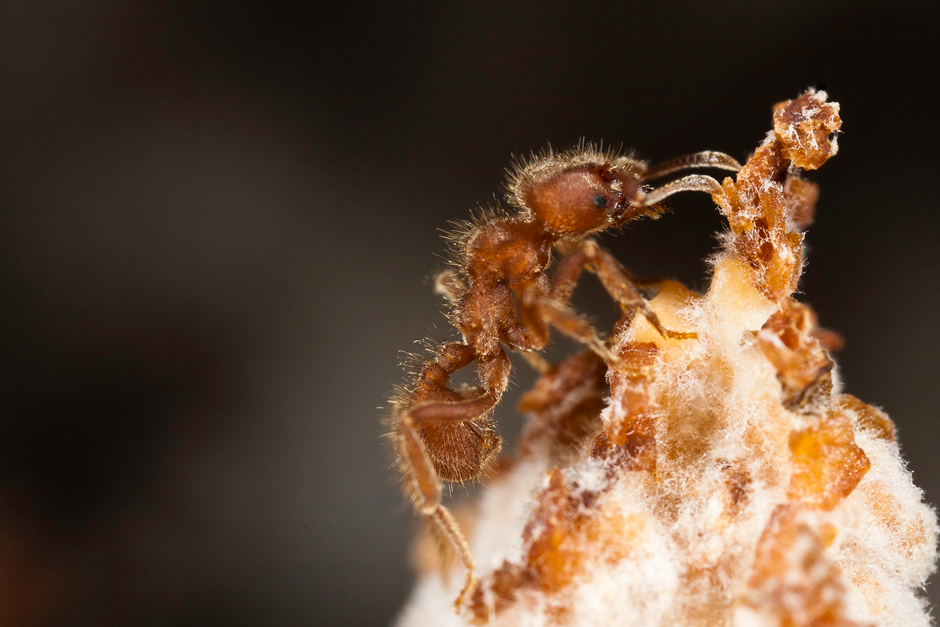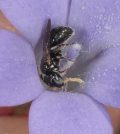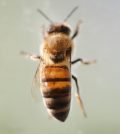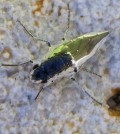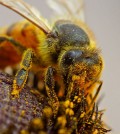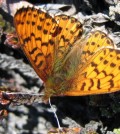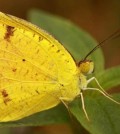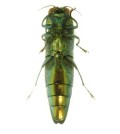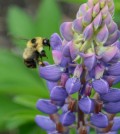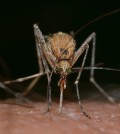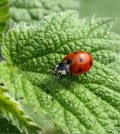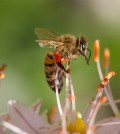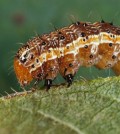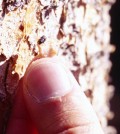Posts for tag "insects"
The Coevolutionary Arms Race: Fungus-Growing Ants and Social Parasites
Thinking about how to eradicate social parasites is common, but there is a lot to learn from parasites--they’re drivers of selection shaping populations.
- Posted September 12, 2022
For Some Bees, Climate Change Could Be Good
The latest scientific buzz is that climate change could be good for certain bees, according to a press release from Pensoft Publishers. Australian small carpenter bees’ numbers seemed to have increased exponentially after the previous Ice Age.The...
- Posted June 10, 2016
How Monarch Butterflies Know Which Way To Migrate
Ever wonder how monarch butterflies always know the right direction (southwest) to migrate? Well, science has answered that question: The butterflies combine the sun’s position on the horizon with the time of day to choose the correct...
- Posted May 17, 2016
Goldenrod Pollen Less Nutritious For Bees Due To Climate Change
Yet another factor has emerged that is putting stress on bee colonies: Goldenrod pollen is now less nutritious than it used to be. It contains about a third less protein than it did around the beginning of...
- Posted May 6, 2016
Mono Lake Brine Flies Make Air “Submarines” To Survive Toxic Lake
It’s not easy being a fly, what with all the creatures out there that always want you to go away. But for the brine flies that live near California’s Mono Lake, the worry isn’t so much predatory...
- Posted January 22, 2016
Bee Decline Across United States Shown In Map
Pollinators are important for food production all over the world. In the U.S., it’s estimated that $3 billion of the agricultural economy depends on the services of creatures like butterflies, bats and bees to pollinate and grow...
- Posted January 5, 2016
Arctic Butterflies Getting Smaller As Climate Warms
Although many scientists have documented changes in species all over the planet due to global warming, not many have turned their attention to changes in butterflies, another species discovered to be sensitive to climate change. But according...
- Posted October 12, 2015
U. Hawaii Scientists Find New Butterfly In State’s Islands
Scientists at the University of Hawaii have found a new butterfly living in the state, according to a release. The last time such a discovery occurred was in 2008, they say, and is rare given the fact...
- Posted October 6, 2015
Tennessee Arborist Uses Advanced Techniques To Fight Emerald Ash Borer
A University of Tennessee arborist uses urban management techniques to fight emerald ash borers on the school’s Knoxville campus.
- Posted October 2, 2015
NCAR Scientists Study Complexities Of Dengue Transmission Risk In U.S.
Scientists at the National Center for Atmospheric Research have been studying the issue of dengue transmission risk in the United States for more than a decade, according to a release from the agency. Their understanding of the...
- Posted August 11, 2015
Bumblebees Fail To Move North In Response To Climate Change
Climate change has driven many terrestrial and aquatic species northward, but North American and European bumblebees are proving an exception to the rule. By not shifting their ranges north, bumblebees have lost up to 300 kilometers of...
- Posted July 16, 2015
Scientists Abuzz About Tracking Mosquitoes With Computer Models
Scientists are buzzing about a better way to track disease-carrying mosquitoes, according to a recent Environmental News Network article. The Aedes aegypti and the Aedes albopictus species carry untreatable viruses like chikungunya and dengue, which can be...
- Posted July 13, 2015
Single-cell parasite may be responsible in part for global honeybee colony decline
Declines in honeybee colonies across the world over the past decade have left many ecologists scratching their heads. While pesticides have taken much of the blame, new research from the University of California San Diego suggests that...
- Posted June 2, 2015
More water flowing from bark beetle infested watersheds
Forested watersheds turned from green to grey by widespread bark beetle infestations are also yielding more water than they once did.
- Posted March 12, 2015
Wasps turn ladybugs into zombie nannies
A new report outlines how parasitic wasps turn ladybugs into mindless caretakers, according to a Science News article. Scientists learned the Dinocampus coccinellae deploys a mind-controlling virus via the eggs sacks it lays inside ladybugs. The RNA...
- Posted February 26, 2015
USDA plans new surveys and funding for honeybee decline
With an eye towards reversing the current honeybee decline, the National Agricultural Statistics Service of the U.S. Department of Agriculture plans to get a better idea of how many honeybee colonies are lost each year and determine...
- Posted November 20, 2014
Study finds fall armyworm’s secret to eating toxic plants
Maize and other plants use toxins to repel insects and worms. But by monitoring a specific chemical inside a fall armyworm, researchers at the Max Plank Institute for Chemical Ecology discovered that the worm’s gut can chemically...
- Posted October 22, 2014
Mountain pine beetle outbreak leaves more groundwater for streams
Vast swaths of dead trees killed by mountain pine beetles are leaving behind groundwater that is increasingly finding its way into mountain streams.
- Posted May 7, 2014
Study finds pine beetle outbreaks have minimal impact on water quality
Study finds ravaged forests are still buffering streams from nitrates
- Posted February 1, 2013


